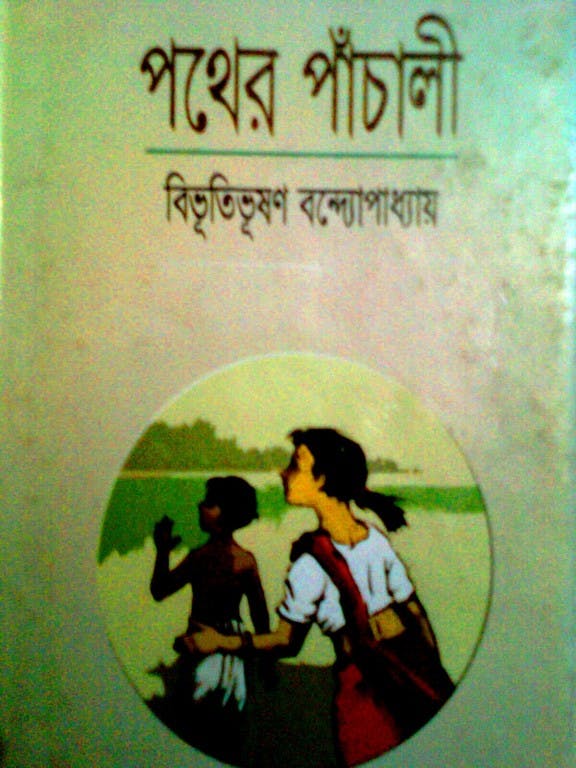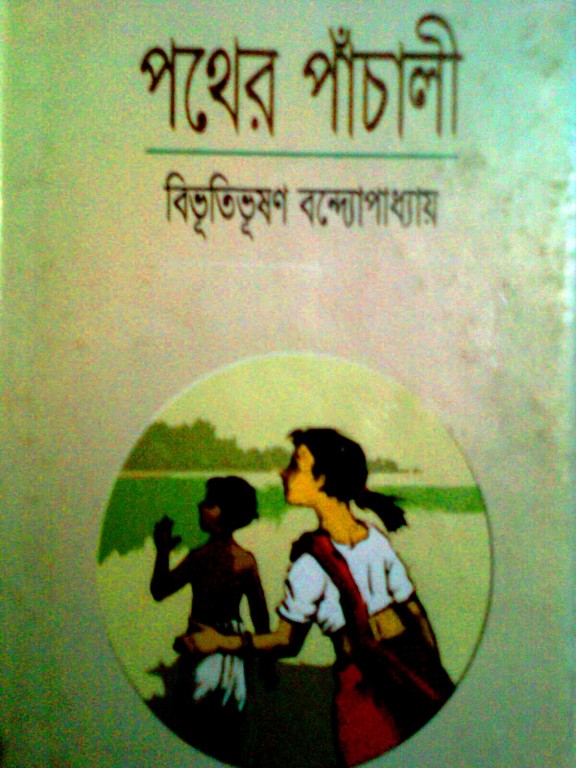Pather Panchali: A Cultural Testament
Jan 21, 2015
Story


Pather Panchali
Bibhutibhushan Bandyapaddhaya
First Published in Single Volume by: Ranjan Prakashalaya (Calcutta: 1929)
Copy at Hand Published by: Nafis Publications (Dhaka: 2003)
How many of us, which means the new generation youngsters, have ever thought of how a lady feels when she is continually taunted by others just because she has no earning source and needs to depend on others for feeding her stomach? What happens if the lady is from such a religious community that does not permit her to marry again? What happens when the lady reaches the eventide of her life? While reading the initial parts of the magnificent novel “Pather Panchali” by Bibhutibhushan Bandyapaddhaya, I encountered the answers to these questions on which I had never cast a thought before.
The first section of the novel titled “Ballali Balai” gives us the idea of an odd but widely practiced kind of marriage custom in many remote villages of the then-Bengal. As poverty was a much prevalent phenomena, men took polygamy as a means of livelihood. They looked forward to receiving dowries and also, moved from one in-laws’ house to another in rotation to lead a life without earning on their own but rather enjoying on what they got during those visits to their in-laws. Indirthakrun was also married to one such man who had once left her parents’ house for another wife’s one but never returned. Indirthakrun later on spent her life with her parents and following her brother’s death, she had nobody other than her distant cousin Harihar to live with. But still she had to change her habitat every now-and-then just like a water hyacinth does- but every time, her paths led her at Harihar’s place ultimately.
The main point of cultural consequence could be notified in the last segment of the first section. The rudest face of Hindu Caste System is unveiled with the narration of Indirthakrun’s death scene. Following an argument with Sharbajaya, Indirthakrun left Harihar’s house. As her health was not going well for the few previous days, she could not reach her temporary home outside the village; rather she had to stop at a locality where low-caste dwellers lived. As soon as her condition started deteriorating, the locals could surely understand that she was going to die but none of them came forward to pour water into her drying throat. They thought that this might destroy Indirthakrun’s Brahmin identity in addition to making themselves even more undesirable in the view of the upper-caste community as well as in the view of their Supreme God. By the time a person from the Brahmin community reached the spot to feed water to Indirthakrun, she had already passed away.
While the second section “Aam Aatir Bhepu” completely revolves around the young lad Opu, but throughout the section Durga, Opu’s sister, was also a dominating character. Here Bibhutibhushan has successfully portrayed the sweet and sour relationship shared by all siblings. At one point, Durga would scold, and even beat Opu for disclosing her involvement in the mango-stealing activity in the neighborhood orchard; at another point, she would convince her brother at the next moment by offering him something tasty to gobble, and most of the time, the scrumptious item would be mangoes again. Basically, the second chapter mainly narrates some events rather than highlighting any major cultural issue.
The last chapter “Akrur Sangbad” focuses on the ever prevailing concern regarding the discrimination between rich and poor in the undivided Bengal Region. Here, Bibhutibhushan has again succeeded to depict how a Brahmin housewife feels when she has to transform herself into a housemaid because of poverty. While reading the fine description, we could clearly sense the pain of Sharbajaya and at this point, there could hardly be any person who will be able to hold his tears back. Moreover, the treatment that her son, Opu, received from her shelterer also magnifies the way poor were treated at that period by the elite society. At last, Sharbajaya found the torture intolerable and decided to move to her home back in the village Nishchindipur along with Opu.
The novel marks a dramatic end with Sharbajaya and Opu heading for their village but getting confused about the right direction towards it. This bears the testimony of people at different points in their lifetime where they get perplexed about their goals and tracks. Indeed, “Pather Panchali” is a complete chronicle of the ups and downs experienced by an individual throughout his lifetime and also a testament of some notable cultural practices practiced in the undivided Bengal.
--- Tanzina Ahmed Choudhury ---




